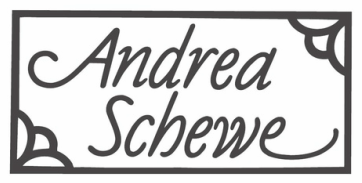But then my aunt, Erna, wrote on my Facebook page saying "What about Mr. Singer?"
So ... what about Mr. Singer. Certainly that name comes to mind for 99% of us before Mr. Howe.
Here is the beginning of her article. You can read this entire article here.
When I look at this iconic machine—sturdy, practical, dependable—I think about how it revolutionized homemaking in America and shaped my personal history as well.
Isaac Merritt Singer’s Patent No. 8,294 was a vast improvement upon earlier versions, capable of 900 stitches a minute—at a time when the most nimble seamstress could sew about 40.
Though the machine was originally designed for manufacturing, Singer saw its domestic potential and created a lighter weight version, which he hauled to country fairs, circuses and social gatherings, dazzling the womenfolk. The $50 price tag was steep, but Singer sold thousands on the installment plan. His machine revolutionized manufacturing and industry, transforming the lives of millions and making Singer a very rich man—a classic American story.
That got me to thinking ... what WAS that vast improvement?
Here is what I found out at the Singer Sewing Machine website's history page.
Isaac Merritt Singer, after examining the machine, noted "instead of the shuttle going around in a circle, I would have it move to and fro in a straight line. In place of the needle bar pushing a curved needle horizontally, I would have a straight needle and make it work up and down."
After 11 days and forty dollars in cost, Singer completed his invention: the world's first practical sewing machine.
And there is more interesting stuff there if you are interested.
Soon after the conclusion of his last court case, Howe was approached with a unique offer. An machinist by the name of Isaac Singer had invented his own sewing machine that was different in almost every way than Howe’s; every way except one – its eye-pointed needle. That little needle cost Singer thousands of dollars in royalties, all paid to Howe, but inspired the country’s first patent pool. Singer gathered together seven manufactures –all of whom had likely lost to Howe in court– to share their patents. They needed Howe’s patents as well and agreed to all his terms: every single manufacturer in the United States would pay Howe $25 for every machine sold. Eventually, the royalty was reduced to $5 but it was still enough to ensure that by the time Elias Howe died in 1867, he was a very, very rich man, having earned millions from patent rights and royalties. Singer didn’t do too bad for himself either. He had a penchant for promotion and, according to American Science and Invention earned the dubious recognition of becoming the first man to spend more than $1 million dollars a year on advertising. It worked though. The world hardly remembers Elias Howe, Walter Hunt, Barthélemy Thimonnier, Josef Madersperger, and Thomas Saint, but Singer is practically synonymous with sewing machine.
Court case??!!! Well, of course there must have been all sorts of court cases, with so much potential money involved. The rest of this article has more about who sued whom.
It is very different now. I guess American sewing machines have run into the same competition as American cars. There are so many options. I, myself, am a Bernina gal.
It seems all serious sewers are very loyal to THEIR brand. I know Martha McCain is a Pfaff gal. She and I have had arguments over this!!
I have 3 mechanical Berninas. They are varying degrees of old. I just don't think I need any computerized features. And the reason I love these old machines? They are just so strong and reliable. The whole bobbin case area is easy to take apart, clean, oil and put back together. They are my good old friends.
What machine do you like ... and why??




 RSS Feed
RSS Feed